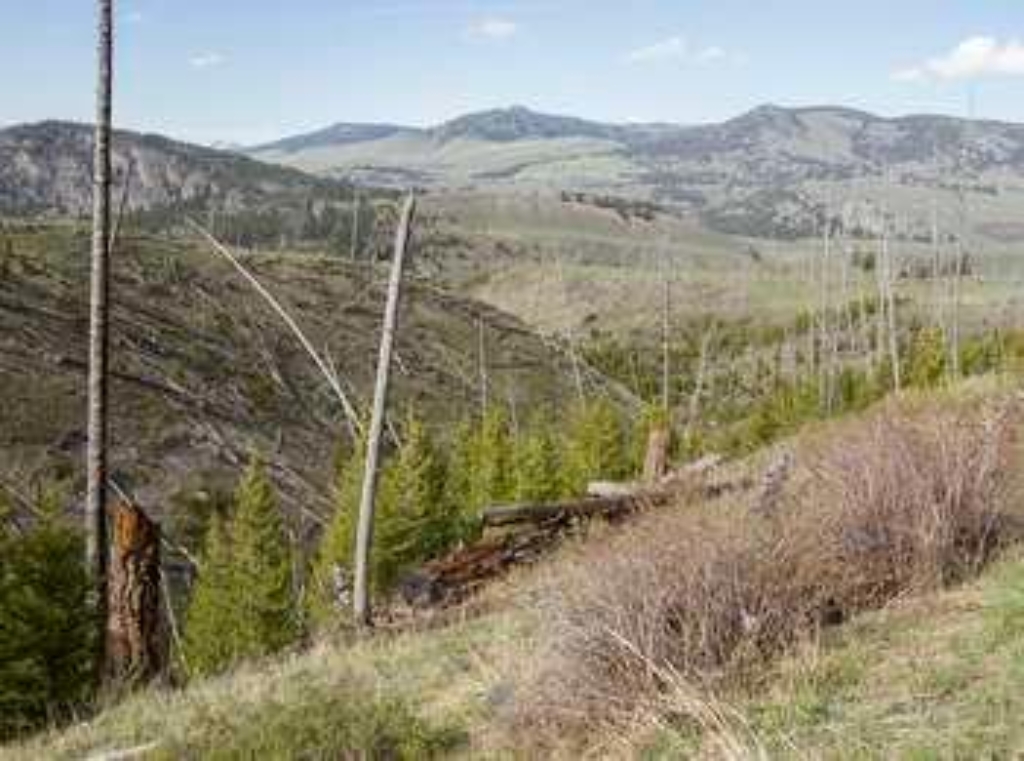
Burned trees and those that have died for other reasons still contribute to the ecosystem. For example, dead standing trees provide nesting cavities for many types of animals; fallen trees provide food and shelter for animals and nutrients for the soil. However, park managers will remove dead or burned trees that pose safety hazards along roads or in developed areas.
How Does Fire Benefit Yellowstone?
Fires are a natural part of the Greater Yellowstone Ecosystem and vegetation has adapted to fire and in some cases may be dependent on it.
Fire promotes habitat diversity by removing the forest overstory, allowing different plant communities to become established, and preventing trees from becoming established in grassland.
Fire increases the rate that nutrients become available to plants by rapidly releasing them from wood and forest litter and by hastening the weathering of soil minerals. This is especially important in a cold and dry climate like Yellowstone’s, where decomposition rates are slower than in more hot and humid areas.
Additionally, natural fires provide an opportunity for scientists to study the effects of fire on an ecosystem.
Is there something we missed for this itinerary?
Itineraries across USA


















































